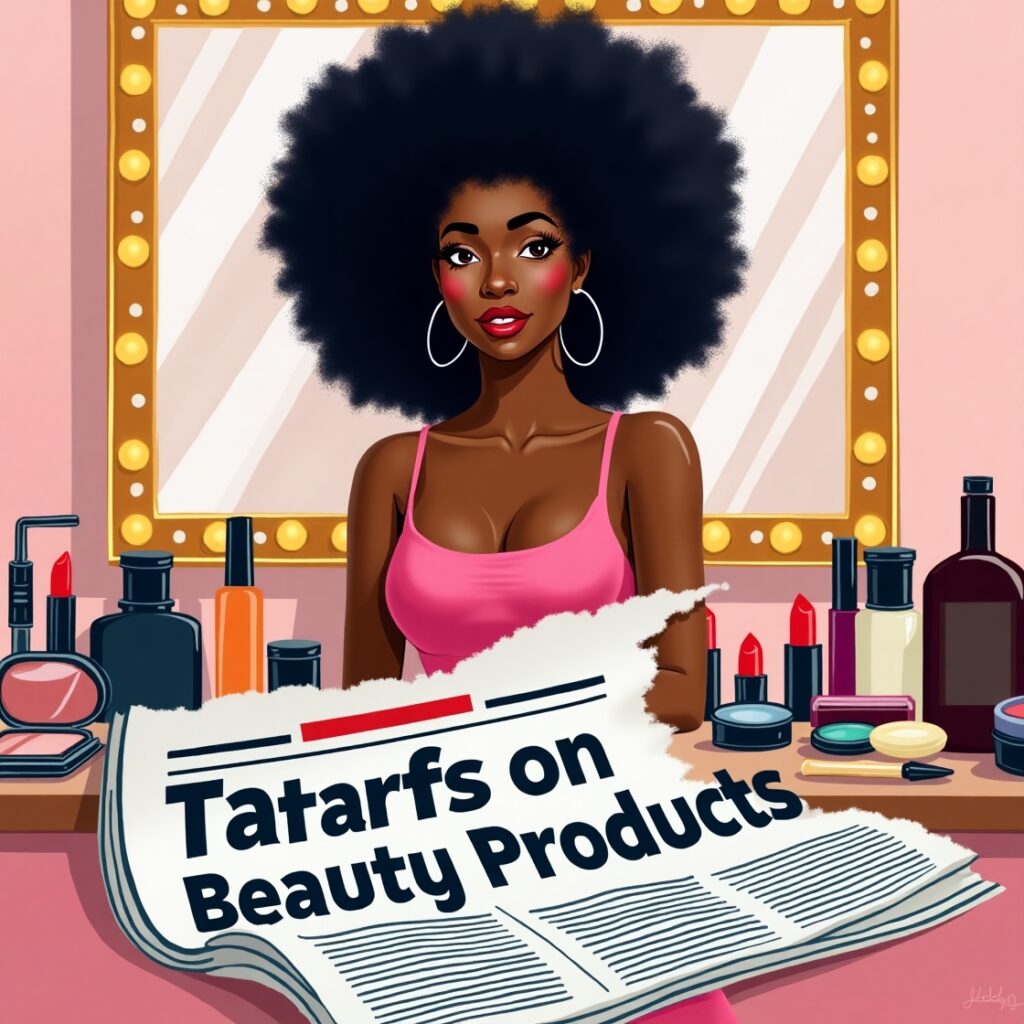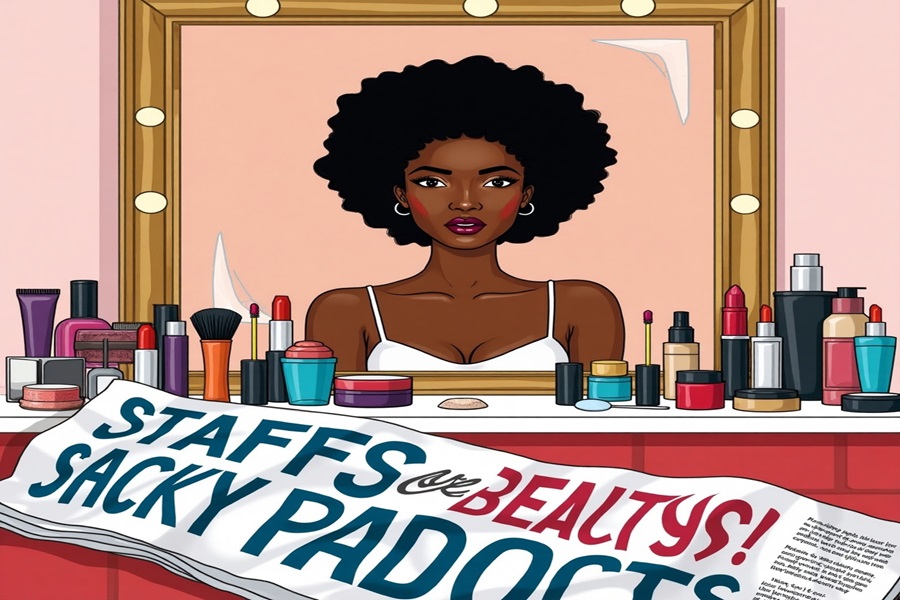The beauty industry is now one of the quickest-developing and most internationally connected
sectors. Luxury French perfumes as well as wellness innovations from Korea all find their way
into international markets each day. Because tensions between larger countries are affecting world
trade tariffs are gaining more attention now.
Tariffs which are taxes on imported products, can influence many different industries. Could
beauty products experience any side effects? To put it briefly: Yes, it does so in a variety of ways.
The article examines how tariffs are affecting the beauty industry, what choices companies and
customers are making and what might happen in cosmetics and skincare due to changes in
international trade policies.
Understanding Tariffs in the Context of Global Trade
A tariff happens when the government charges for any imported goods into the country. There are many purposes served by such efforts.
- Keep domestic companies safe from competition by foreign firms
- Collect cash for the public
- Approach issues when one country trades more with another or experiences polarizing politics
Once export goods are subject to tariffs, local buyers frequently pay more for them which could affect sales, shipping processes and the way people buy goods.
Because many raw materials and finished products in the beauty industry come from international suppliers, tariffs can cause many difficulties.
Why the Beauty Industry is Vulnerable to Tariffs
A big part of the beauty industry is relying on worldwide supply chains. While the shea butter is sourced in West Africa, product packaging is made in China and assembly takes place in Europe or the U.S., the process generally crosses many countries.
Key Reasons for Vulnerability
High Volume of Imports and Exports
A lot of countries either import or export beauty products. The U.S. gets products from France, South Korea, China and Canada and also distributes goods to Europe and Asia.
Raw Material Dependencies
Some of the usual ingredients such as essential oils, colorants and natural extracts, are sourced from developing parts of the world.
Packaging and Manufacturing
Quite often, beauty brands have packaging manufactured in regions under tariff charges like China or Southeast Asia.
E-Commerce and Global Consumers
Since many direct-to-consumer companies deliver globally, they must deal with tariffs in their online sales.
Case Study: U.S China Trade War and Its Impact
Tariffs on beauty items became very visible during the U.S.–China trade war that took place between 2018 and 2020.
What Happened:
- Makeup, skincare products and packaging are among the billions of dollars’ worth of Chinese goods that the U.S. is now taxing with import tariffs.
- In response to the S., China imposed tariffs on its exports to America.
Industry Impact:
- Cost Increase: Packaging prices from China rose for some beauty brands by up to 25%.
- Reshuffling Supply Chains: Changing How Goods Are Made: Because of tariffs, a lot of businesses moved their manufacturing to places like Vietnam, India or Mexico.
- Price Pass Through: Prices went up for some brands, making things less affordable for
- Smaller Brands Struggled: It was a tough time for small beauty brands, since many struggled to cope with the added costs and could barely make profit because of that.
Categories of Beauty Products Affected By Tariffs

A range of beauty products can be taxed with tariffs. Examples of the common categories are:
1. Cosmetics
When you think of makeup, consider lipsticks, mascaras, foundations and powders.
Cosmetics often include ingredients such as pigments, waxes and oils from outside the country.
2. Skincare
Keeping these products ready can help everyone who comes to you.
Many brands rely on sourcing hyaluronic acid or retinol from all over the world.
3. Haircare
Shampoos, conditioners and styling products are part of your line. Asian countries are popular for producing packaging.
4. Fragrances:
French, Italian and Middle Eastern perfumes and colognes are common products brought into the country.
There may be special rules and taxes on alcohol included in perfumes.
5. Tools and accessories
Included in this group are makeup brushes, beauty blenders, tweezers and items like facial massagers or LED masks.
A lot of products produced in China are greatly affected by import taxes.
How Tariffs Affect Consumers
Tariffs impact both the companies and the final buyers as well. Here’s how:
Higher Prices
Many brands often transfer these extra costs to their customers. A tariff rate can increase the price of a $30 product to $36 or more.
Reduced Product Variety
If the cost of bringing in certain products is too high, some brands choose not to sell them in some countries.
Delayed Launches
Because of changes in suppliers and logistics, it is hard to release new items on time.
Quality Trade-Off
Using cheaper ingredients or packaging can reveal in the final product’s quality for some companies.
Brand Strategies for Navigating Tariffs
Intelligent beauty firms are trying to solve problems that could arise from new tariffs. These include:
Supply Chain Diversification
Consider sending manufacturing to Vietnam, Indonesia or even producing closer to home.
Using Local Ingredients
Brands look for local substitutes for imported food to save on foreign charges.
Repackaging for Local Markets
Some companies finish packaging in the country they export to in order to avoid tariffs on the commercial goods.
Products Reformulation
Using ingredients from outside the tariff limits protects company profits.
Lobey and Trade Advocacy
Organizations within the industry such as the Personal Care Products Council (PCPC), work with policymakers to help keep beauty products out of tariff lists.
Government Responses and Trade Policy
There are many ways governments have chosen to deal with the pandemic.
- Reducing taxes with South Korea through free trade agreements has helped the European Union keep open beauty trade links with Asia.
- American environmental laws change from administration to In 2025, tariff reform is still being discussed among governments.
- China wants Chinese companies to stand on their own in cosmetics and also has lowered import taxes for costly beauty goods to draw in foreign capital.
E-commerce and Cross Border Tariffs
Online beauty purchases made across countries run into problems with tariffs.
- It is possible that customs duties are charged when you order items online from other
- Some areas ensure you pay both Value Added Tax (VAT) and import fees at checkout or when your package arrives.
- Because of these extra fees, people buy less from foreign beauty brands, hurting the business of small and mid-size labels.
Tariffs and Rise of Local Beauty Brands
Surprisingly, tariffs have encouraged more people to open beauty businesses locally. In those regions, because of taxes on imported goods, local businesses stepped in to meet the demand.
Examples:
- Thanks to the “Make in India” initiative, India’s cosmetics industry started to
- Indie brands that stay local in the U.S. became popular because orders arrived faster and they did not face import tax.
- More people buying China’s C-beauty brands is a result of wanting affordable alternatives after the price of imported items rose due to tariffs.
Sustainability and Tariff Intersections
Sustainability is now a big worry in the beauty industry. Curiously, some firms are viewing tariffs as a way to move their manufacturing closer to home which helps reduce their carbon emissions. By sourcing and producing closer to home, brands achieve.
- Reduction in emissions from shipping
- A drop in the use of imported plastic packaging
- Improved ability to trace where ingredients come from
In fact, fundraising through tariff increases can support eco-friendly business decisions, helping both the planet and the company’s image.
Will Tariff Always be a Threat?
Not necessarily. Despite the danger during tense times between countries, some factors can help bring down long-term risk.
Free Trade Agreements
In membership to these FTAs, USMCA, EU–Korea FTA and RCEP, countries aim to lower their tariffs with each other.
Global Beauty Alliances
Industry organizations are coming together to defend businesses involved in cosmetics from tough tariffs.
Smart Trade Tech
Firms depend on artificial intelligence and data analysis to plan for tariff risks and adjust parts of their supply chains as needed.
Conclusion
Like with many other goods, trade tariffs can allow ability impact the cost of beauty products. The problems and results can be seen in price changes, changes to the supply system, new trends among consumers and new government policies. When geopolitical sailices change, tariffs will continue making a difference in the production, pricing and selling of beauty items.
Agility and knowledge are key for companies. Knowing about the price factors can influence consumers to make better decisions when they purchase.
Beauty companies have always adjusted to what’s popular and new. It must now respond to global trading conditions and it is showing it can do this in a strong and creative way.
